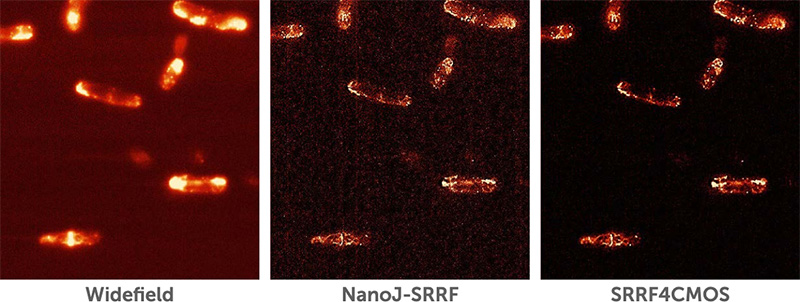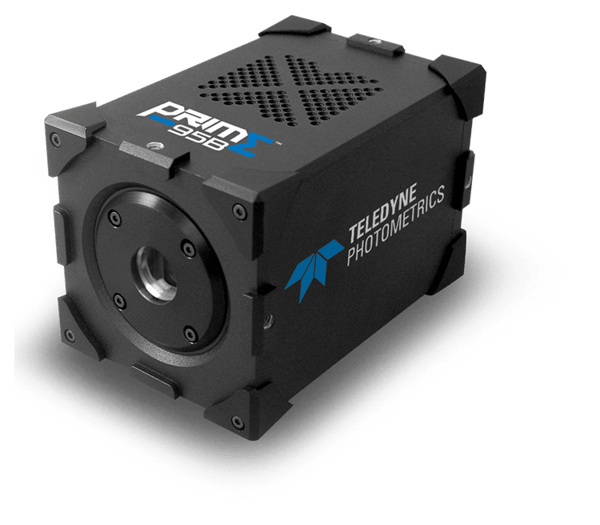SRRF and Super-Resolution Microscopy
Dr. Ricardo Henriques, LMCB Group Leader, UCL Senior Lecturer, Experimental Optics Leader,
Medical Research Council Laboratory for Molecular Cell Biology (LMCB), University College London (UCL)
Background
The Henriques group use various super resolution microscopy techniques to investigate cell signalling and host-pathogen interactions as well as creating and developing technology for cell biology research.
A big challenge in super-resolution microscopy is the requirement for intense illumination but this is usually phototoxic and incompatible with live-cell imaging. To tackle this problem the group developed a new approach - Super Resolution Radial Fluctuations (SRRF) - which enables super-resolution imaging using any fluorophore with far lower illumination intensities than conventional super resolution techniques.

LifeAct-GFP labelled fission yeast
Left: Widefield image
Middle: Image after applying the conventional NanoJ-SRRF algorithm
Right: Image after applying the in-development novel version NanoJ-SRRF algorithm optimized for CMOS devices (to be named SRRF4CMOS).
All images acquired with the Prime 95B scientific CMOS camera with a 10 ms exposure time (yielding 1 super-resolution frame per second).
Challenge
The Henriques group recently started using the Prime 95B Scientific CMOS (sCMOS) camera for some of their work. Dr. Henriques told us, "We've been actively using the Prime 95B as one of our main cameras for low-signal and super-resolution imaging at UCL. The Prime 95B Scientific CMOS is an outstanding camera, particularly due to its low-noise, high-sensitivity and large field-of-view."
The group is also using the Prime 95B as they adapt the SRRF algorithm for use with CMOS cameras. Dr Henriques explains, "Super-resolution microscopy using our SRRF method was designed for EMCCD cameras but we are currently updating the SRRF algorithm for improved quality and performance when using data from modern CMOS devices to take advantage of the large field of view and higher speeds available."
The accuracy of SRRF is directly related to the speed of acquisition so a faster camera would be advantageous.
The Prime 95B Scientific CMOS [sCMOS] is an outstanding camera, particularly due to its low-noise, high-sensitivity and large field-of-view.
Dr. Ricardo Henriques
Solution
The updated algorithm is expected to be released soon. Below are images obtained with the Prime 95B camera to show how SRRF is evolving to work with Scientific CMOS sensors.

Learn More About The Prime 95B